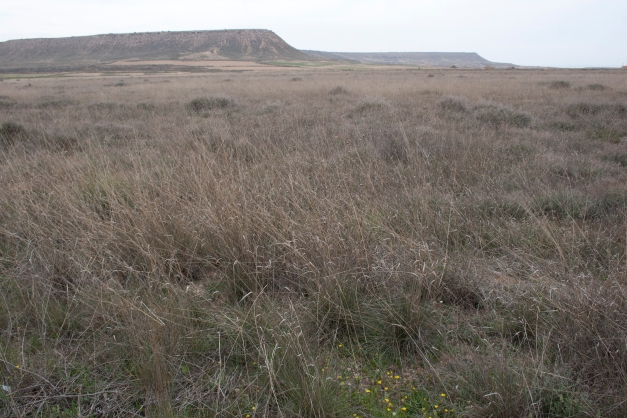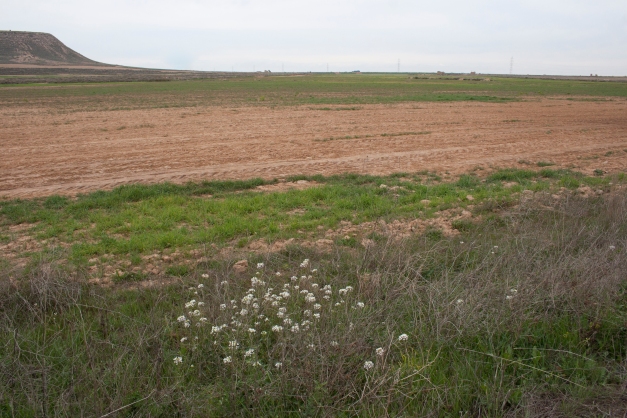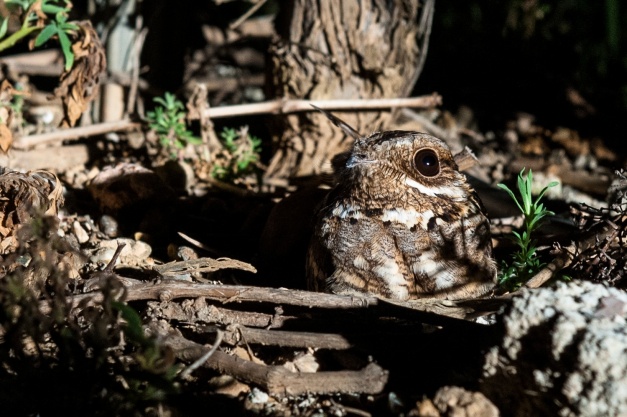How to find out Sandgrouses?
Sandgrouses are sometimes defined «desert Partridges». However, the enigmatic Pterocles genus is much more than Partridges. All Sandgrouses present incredible specific morphological adaptations to survive in adverse, dry countryside. The most famous one is this that allow them to transport water supplies to their chicks from ponds or rivers placed kilometres away from their nesting sites. This incredible habit is possible thanks to special feathers in their breast and allow them to colonize breeding areas without any water supplies during the nesting season.

Sandgrouses live throughout semi-deserts, steppe lands and deserts of Asia, Africa and Europe. In Europe there are two species; Black-bellied Sandgrouse (Pterocles orientalis) and Pin-tailed Sandgrouse (Pterocles alchata).
This two species are famous because they can be very striking birds to find out. This post will help you in the difficult work of finding out some Pterocles.
Well, let’s say you are in a supposed good area for Sandgrouses. It is for several weeks you have read and reread the articles talking about where to find that birds. And finally you are there. Let’s suppose it is the first time that you’re visiting any steppe land. Around you it is a endless stretch of more or less plain, uniform terrain. How to find them out? What to look for?
SELECTING THE STREGHT
The first you have to think is that the terrain you have around is not homogeneous. Steppe lands, as any other ecosystem, have multiple variables acting on it. Some important variables to our purpose of finding Sandgrouses are: presence/absence of farm lands, vegetation cover, presence/absence of cattle (goats or sheep), presence/absence of water supplies and soil irregularity (more or less broken terrain).

All of these items have an important influence about the presence and density of Sandgrouses. We have finally to be aware that Pin-tailed & Black-bellied Sandgrouses have different preferences in order to use the soil as well as different ecological requirements.
Let see one by one these terrain variables:
Presence/absence of farm lands. In Europe there is really few original steppe land left and thus most of it has been reconverted into farm land and prairies for cattle graze. However there are some places where you still can see the original steppe as it used to be until some centuries ago. Thus you are likely to be surrounded by a endless area of farm land. The first you have look for is for non crop fields. Due to the poor soil fields cannot be crop every year and thus some of them are resting. These fields are full of plants and they really likely to attrack Sandgrouses as they produce big amounts of seeds.
Vegetation cover. Avoid any field with really dense vegetation cover, especially if being bushered. No way to be Sandgrouses on them. Even if being there you may have almost none chances to find them out.

Presence/absence of cattle. Cattle has a really important rule in Sandgrouses densities, especially about Pin-tailed Sandgrouse. This species is really likely to be immediatly around small courts and buildings where cattle (goats and sheeps) are sheltered. The reason is simple; as much the plants around are cattle as more plants are able to grow and thus, produce more seeds than average fields. One point; be aware of dogs!
Presence/absence of water points. Water points are really central items in Sandgrouses’ daily movements. However, not every single pool in the steppe is likely to attrack them. This is depending on the cover vegetation of the pool it self, its size, the number of pools around and, most important, the habits of the birds living immediatly around and natural history of the pond. However, to wait around a water pond can be good strategy in summer months in order to see some Sandgrouses, at least flying around while deciding if landing down or not.
Soil irregularity. Sandgrouses are good flyers, able to cover quite long distances. However, as any other bird living in the steppe lands, favours open, plain terrain. It means that they normally avoid to feed on canyons, small or medium-sized canyons as well as slopes. No matter how wonderful a steppe land can be, if being a in a slope +20º, it is 95% sure that there are no Sandgrouses around and it is better to look for them in a different location.
STRATEGY
Well, know you are in the area famous for its Sandgrouses and once you have identified what fields can be more interesting for them is the moment to start exploring them. But, how?
By car. It is no point to go by food since Sandgrouses (as Bustards and many other birds living in open spaces) will start to fly as far away as 300-400 metres from you! Sandgrouses really scare about people walking around but not so much about cars moving. So, the best strategy is to drive slowly by the dart roads, looking every single field likely to have them on ground.
It takes no point to go to «some special fields», since the farm land is changing every year and the field that used to be resting two or three years ago now can be a wonderful croop with no chance for hosting any Sandgrouse.

The «car strategy» has to be combined with some stops to scan specially attractive fields or bigger fields. It is also the proper momment to be aware about their characterystic calls of the flocks moving around.
During summer we can select a good pond a wait there. Sandgrouses use to come drink water during the morning so a two-three hours long wait should produce good views. If birds are not appearing the wait can be really frustating, thought.
SEASONAL VARIATIONS
Not all seasons are the same to look for Sandgrouses, and thus strategy has to change depending on it.
During winter Sandgrouses flock. As any other bird living on the steppes, this is a system to fight agaisnt predators and it is also helpful for all individuals involved in the flock to find food suplies. Big flocks can be really easy to find when flying but, as birds are more concentrated, you have less chances to find THE flock, actually.

From mid March onwards flocks start to be smaller and smaller as different pairs start to come to their nesting grounds. March to June is probably the best time explore the steppes as small flocks are likely to fly around, seed production is the highest and the heat, unexistent.
From mid-July Sandgrouses start to move in family groups, sometimes involving two-three pairs or even more. They are likely to appear around ponds and sometimes up to 20 individuals arrive to drink water in such a places.
If you still have doubts about how to find them or prefer to be guided, please contact with professional guides: info@barcelonabirdingpoint.com
As a end, here you have another inhabitant of the steppes; Red-necked Nightjar (Caprimulgus ruficollis)


